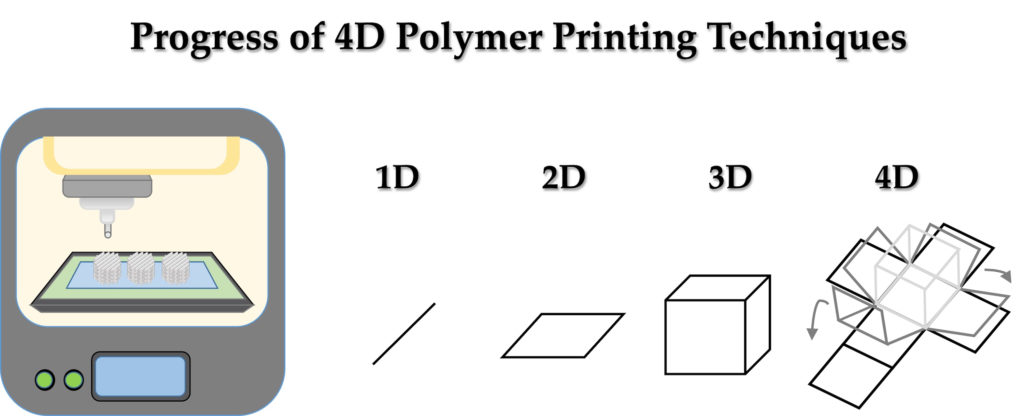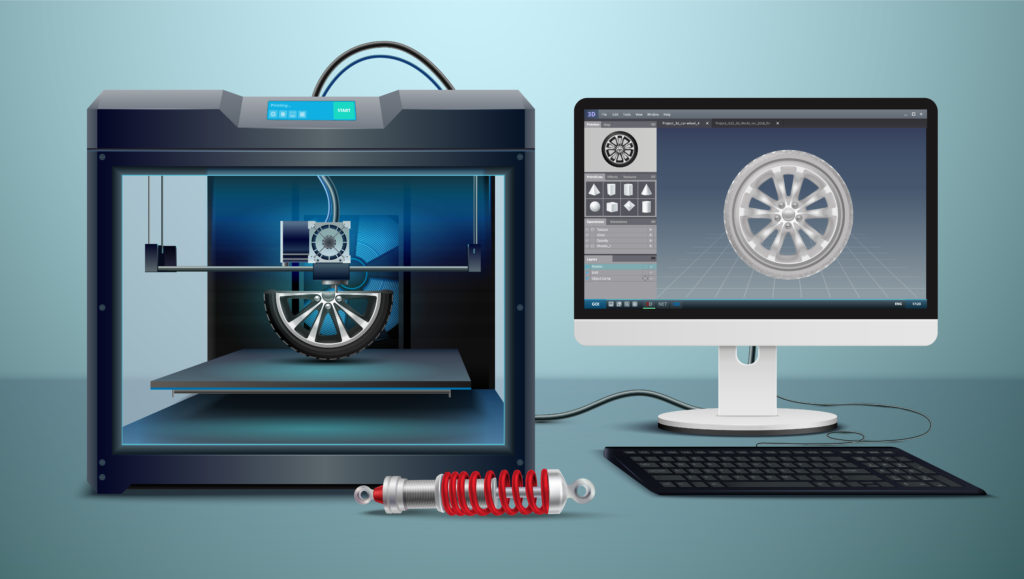3D printing has gained popularity over the past 30 years as one of the most innovative and promising fields of technology. The outcome of 3D printing was tremendously advantageous to various industries, including medical and construction. 3D technology, however, is no longer a novelty. Experts are already working with 4D technology around the globe to give 3D printing a new dimension. The development of new 3D printers, materials, and applications represents a successful industry advancement in this area. The technology underpinning 4D printing is now a reality thanks to these disruptive innovations.
Given the innovations made in this field, it is safe to say that 4D printing will experience rapid growth in the years to come. Therefore, learning about this technology can help you obtain an edge over your competition. In this regard, the article imparts an understanding of the basic concepts of 4D printing. So, go on reading to expand your knowledge.
What is 4D-Printing?
Using the 4D printing method, a 3D-printed object can adapt to changes in the environment, such as heat, light, or other environmental changes; taking on new shapes and structures over a period of time. It is possible for an object to change its shape own, even without the aid of humans.
4D-printed objects can occasionally construct and involve themselves given the alternatives provided. This technique combines technology and design to create self-assembly and programmable material technologies to reinvent construction, production, product assembly, and performance. Specifically, 4D-printing breakthroughs bring up a new realm of opportunity for industries like construction, civil engineering, and medicine.
How Does 4D-Printing Work?
Commercial 3D printers are used in 4D printing technologies. The printers use the “smart material” input such as a hydrogel or a shape memory polymer for printing objects. Smart materials differ from standard 3D printing materials due to their shape-changing properties and other thermomechanical traits. Using smart material in printing enables the thing to change shape over time.
What are the Smart Materials used in 4D-Printing?
Listed below are some of the commonly used 4D-Printing smart materials:
1. Thermo-Responsive Materials
This material function via the Shape Memory Effect mechanism (SME). They develop and distort when thermal energy or heat is applied as a stimulus. Most researchers favor Shape Memory Polymers because they are easy to print on.
2. Moisture-Responsive Materials
Materials in this category include those that adapt to moisture or water. Researchers frequently choose to use water since it is readily available and has a wide range of applications. Hydrogel is one of the smart materials as it has strong reactivity to water.
3. Photo/Electro/Magneto-Responsive Materials
These materials are affected by magnetic fields, electricity, and light. For instance, when exposed to natural light, photoresponsivity chromophores are precisely injected with polymer gels that swell and absorb light. Likewise, when ethanol is present in an object, it evaporates, increasing the volume of the thing and the matrix. Similarly, magnetic nanoparticles are added to the print to provide the object’s magnetic control.
Applications of 4D-Printing?
Some of the current applications of 4D printing include:
1. Aerospace
NASA created Space Chain Mail, a flexible metal fabric that might be used as a shield in human spacesuits and spaceship antennas. It was created utilizing 4D printing technology. Similarly, Airbus and MIT have created the Programmable Carbon Fiber Inlet component to automatically regulate the airflow for cooling engines.
2. Healthcare
A 4D-printed Airway Splint that expands automatically double in size in response to a child’s needs has been created by the CS Mott Children’s Hospital at the University of Michigan.
3. Fashion
In collaboration with MIT, Christophe Guberan created a self-assembling shoe to do away with labor-intensive and complicated manufacturing procedures.
4. Automotive
Together with MIT and BMW a silicone material was developed that can self-inflate and alter size and shape in response to air pulses.
Conclusion :
The study and development of 4D printing technology are still very much in their initial stage. Currently, only labs, prototyping facilities, architectural displays, and art installations are likely to contain 4D-printed objects. Just like 3D printing, the future of 4D printing appears bright and its potential is vast. The adoption of such intelligent materials may completely alter the way that we currently think about materials. Therefore, developing skills in this domain is beneficial to grow career opportunities.
FAQs
Is 4D printing used in medicine?
Yes, 4D printing has applications in medicine, such as the creation of adaptive implants and devices like self-expanding airway splints that adjust to a patient’s needs over time.
What are the benefits of 4D printing?
4D printing offers enhanced functionality, self-assembly, and adaptive capabilities. It reduces the need for external energy sources or manual intervention, making it valuable in industries like construction, medicine, and aerospace.
How does 4D printing work?
4D printing uses standard 3D printers but incorporates smart materials like shape memory polymers or hydrogels, allowing the printed objects to transform after printing, adapting to external changes.
What are the career opportunities in 4D printing technology?
Learning 4D printing at CADD Centre opens up career opportunities in fields like aerospace, construction, healthcare, automotive, and product design. Professionals skilled in 4D printing will be in demand as industries seek to integrate adaptive technologies.
What are the challenges of 4D printing technology?
While promising, 4D printing faces challenges such as the cost of smart materials and limited availability of advanced 4D printers. At CADD Centre, we help students understand both the opportunities and limitations of this emerging technology.






